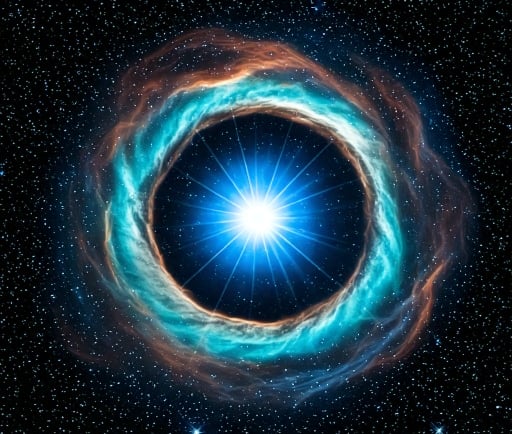The Halo of the Cat Eye Nebula


Introduction to the Cat's Eye Nebula
The Cat's Eye Nebula, scientifically designated as NGC 6543, is one of the most studied planetary nebulae in our galaxy. Located approximately 3,000 light-years from Earth in the constellation Draco, this nebula is renowned for its intricate structures and vibrant colors. However, what often goes unnoticed is the enormous and faint halo of gas that surrounds this mesmerizing object, extending over three light-years across.
The Structure of the Halo
The halo encapsulating the Cat's Eye Nebula is a fascinating feature that stems from material ejected during the star's evolutionary process. This gas halo is believed to consist of remnants from the nebula's parent star, which underwent transitions that occurred between 50,000 to 90,000 years ago. These ejections are crucial in understanding the life cycle of stars, illustrating how stellar evolution contributes to the abundance of elements in the universe.
Understanding Its Formation
The formation of the halo is a testament to the dynamic processes at play when a star reaches the end of its life. As stars undergo their evolutionary phases, they expel significant amounts of gas and dust into space. In the case of the Cat's Eye Nebula, this gas has formed into an extensive halo that not only surrounds the nebula but also provides insights into the events that shaped it. The halo's faintness may render it less visible to the naked eye, yet it holds valuable information about the history of the Cat's Eye Nebula.
Implications for Stellar Evolution Research
The existence of such a vast halo emphasizes the importance of studying planetary nebulae beyond their central structures. Researchers can glean insights into the chemical enrichment of the interstellar medium, which lays the groundwork for new star and planetary systems. By analyzing the composition of the halo, scientists can further comprehend how stars contribute to the lifecycle of matter in our galaxy.
Conclusion
The enormous and extremely faint halo of gas surrounding the Cat's Eye Nebula serves as a captivating reminder of the complex and rich tapestry of stellar life and death. As we continue to explore these celestial phenomena, the gas halo’s history will undoubtedly provide profound insights into the processes that govern stellar evolution, solidifying the Cat's Eye Nebula as a pivotal object of study in the cosmos.
